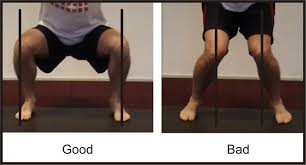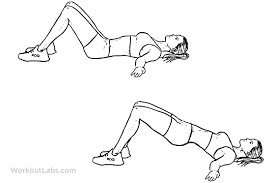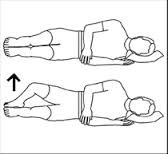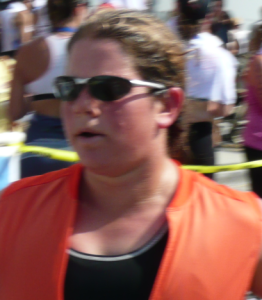Do you have some aching soreness in the front of your knee just below your knee cap? How about some pain on the side of your knee every time you go up stairs? One of the biggest complaints people have that restrict them and their workouts is knee pain. Every time they bend down to do a squat or during sprints there is a nagging pain around their knee.
What is the cause and how can you fix this?
Well, there are a few things that can be going on. Are your knees buckling inward as you squat down? This causes increase strain on your patella and patellar tendon causing major discomfort! Making sure that your knees stay over your 2nd toe and your shins stay almost vertical when you squat will keep your knees from buckling in.
This will help relieve your pain with your squats, jumping exercises (both take off and landing) and even stairs. Part of this buckling of your knees can be due to weak butt muscles. Doing exercises such as bridging and clams helps strengthen those muscles.
Another big problem that people have is muscle tightness. Two of the biggest offenders of this are the hip flexor muscles and the IT band. If your hip flexors are too tight (mostly caused by sitting too much) and can’t fully extend your hips, you won’t be able to properly contract your glutes, again leading to your knees buckling inward when you squat.
A tight IT band can cause pain in a couple different ways. First, it is attached to your patella and if too tight can pull the patella out of its groove and not allow it to glide smoothly. This can scratch up the back of the patella causing pain. Also just by pulling the patella to the side, the direction of the forces that go through your knee are changed and can cause strain and pain in the patellar tendon. In addition there is a small bump on the outside of your femur that your IT band moves over every time your knee bends more than 20 degrees. If the IT band is too tight as it passes over the femur it creates friction and pain.
To reduce the tightness in these two particular areas there are several choices, basic stretches for each area such as a kneeling hip flexor stretch
and a seated twist for the IT band help.
Foam rolling is great for breaking up adhesions within tissue allowing for better movement both in the IT band and hip flexor. Roll over the IT band starting all the way at the top of your hip all the way down to your knee. Use your other foot and arm to guide you as you roll from top to bottom. Try to roll for a minimum of one minute per side. To roll your hip flexor, place your upper thigh on the very edge of the foam roller. Bend your opposite hip and knee about 45 degrees each. Now using your forearms and opposite knee guide yourself over the foam roller, again for about one minute on each side.
Finally using a lacrosse ball to pinpoint some especially tight areas can also help with tightness. This one definitely doesn’t tickle! Lay face down on the floor. Place the lacrosse ball directly under your hip flexor and breathe as you allow yourself to press down onto the ball. Deep breathing allows you to relax and your tissues to release over the ball releasing tightness. Again do this for about one minute per side. Now lay on your side and place the ball along the top of your hip. This is the tensor fascia latae muscle, the origin of the IT band. You can place the ball under several spots up here and then gradually move down the side or your hip.
All of these methods are helpful but are best when used in conjunction with each other.
For more tips on how to ‘fix your knee pain’, check this out:
Article By: Beth Drayer MS, ATC, CSCS
Beth Drayer is a Certified Athletic Trainer and Strength and Conditioning Specialist. She earned her BS in Kinesiology form The Pennsylvania State University and MS in Exercise and Movement Science from the University of Oregon. Her professional career spans teaching group classes from high school to 70+ and personal training to working Division I college athletics for over 10 years. Gaining a wealth of experience and knowledge yearly by attending conferences and summits to learn from the best in her field, she has built a substantial tool box and a unique approach to training and fitness. Her own fitness accomplishments include finishing several triathlons, a marathon and Spartan Race. She also enjoys hiking and playing various sports from tennis to volleyball and has recently started the study of Sholin Karate.











